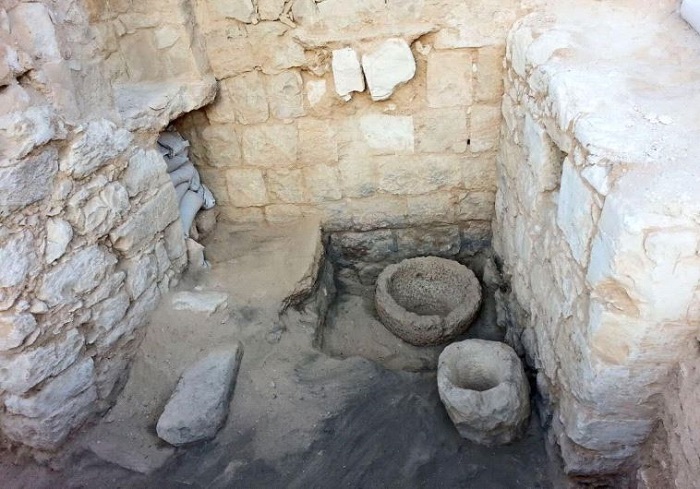According to DePaul University Professor Scott Bucking and the IAA’s Dr. Tali Erickson-Gini, the stable, initially identified via millennia-old manure, was destroyed during an earthquake.
“The identification of the stable was corroborated by an almost 1-meter thick layer of organic matter consisting of donkey, sheep and goat manure on the floor of the building,” they said in a joint statement.
“It seems that the place was destroyed by an earthquake that decimated the city of Ein Advat in the early seventh century CE.”
The stable, which was constructed near one of the rock-hewn caves on the park’s mountainside, was used as a service structure by the local residents, who were apparently monks, the professors said.
“It was divided into a number of stone-built rooms, whose walls were adorned with painted decorations of crosses,” they noted. “Stone basins were also discovered that were probably used for storing food and water for the animals.”
The students from the Har Ha-Negev Field School who participated in the excavation sifted through hundreds of buckets of organic matter that was excavated in the stable under the guidance of Daniel Fox, an archaeo-botanist with Bar-Ilan University.
“They collected seeds and various small organic remains, that in the future can shed further light on the use of the building, and other questions, such as what food the local inhabitants consumed, and what the environment was like in antiquity,” said Fox.
The researchers added that they hoped ancient grape seeds found in the area, which were well-preserved due to the dry conditions that prevail in the region, will allow them to extract the DNA of the ancient plants to identify the different species that were grown there.
Erickson-Gini praised the students for their hard work and aid.
“The young people did an excellent job,” she said. “They learned how an archaeologist works, were given a guided tour of the site, and they displayed great interest in the research and the project.”
“We enjoyed working with them,” Erickson-Gini added. “And I know that they also enjoyed themselves.”
More about:
















































